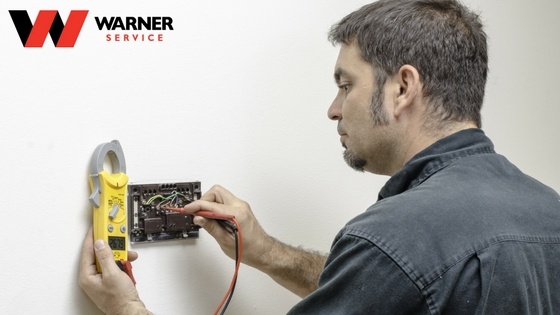
Normally, the winter isn’t kind to your home’s HVAC. Is the furnace not working? Homes and vibrating noises from the water heater don't go together, right?
How do you know if you should Google the solution or call a local professional immediately? Warner Service breaks down a few of the most common HVAC problems regarding the furnace and gas heater, so you know how to handle these heating problems before they happen:
- The furnace has a dirty filter. A clogged or dirty air filter can restrict airflow, making the appliance work harder to circulate not-so-breathable air. It can also damage the limit switch, which controls the fan. It’s easy for you to fix this problem by changing the air filter monthly.
- The pilot light isn’t blue. If the pilot light in the furnace or gas heater is yellow, this means that the air intake valve to the pilot light is clogged with dirt. When this happens, air is blocked to the flame, and it suffers from incomplete combustion, causing the yellow color.
The first issue with a yellow pilot light is that it frequently needs to be relit. This happens because yellow flames don’t burn as hot as blue flames. Because of this, the yellow flame will not adequately heat up the thermocouple, and the gas supply to the pilot light will be shut off.
Another issue is that a yellow pilot light allows carbon monoxide to negatively affect your home’s indoor air quality. This is because carbon monoxide isn’t completely burned by the lazy flame, and the excess gas escapes. Because carbon monoxide is an odorless, colorless toxic gas, it can have a serious consequences on your family’s health.
To prevent all of this, you need to contact a professional to clean the air intake valve on the furnace or gas heater. It’s best to leave ignition issues to the experts.
- The furnace isn’t heating your home. This could be for a few reasons. In addition to a clogged or dirty air filter, the furnace could be the wrong size for your home. An appliance that’s too small won’t be able to heat your large home. Contact a professional to see what type and size furnace would match.
A cold home could also be due to the pilot light, in which homeowners should follow the advice above, or a faulty thermostat setting. A thermostat malfunction can lead to failure of furnace fans and comfort levels throughout your home. To fix this, try the following:
- Check the battery level. Replacing the battery might do the trick.
- Check that the appliance is plugged into an outlet.
- Check the thermostat settings, if the blower fan doesn’t turn off or the furnace cycles too frequently. The fan setting should be on “Auto” in the “On,” “Low,” “Medium” or “High” modes.
- Check that it’s on “Heat” mode.
- Check the temperature to make sure it’s set higher than the current room temperature.
- Check the circuit breaker for a blown fuse or tripped wire, if the thermostat’s screen is blank. (Learn more about the ins and outs of the circuit breaker here.)
- Purchase a new thermostat. It should match the furnace’s capability and capacity.
- The furnace is noisy. If the furnace is rumbling, squeaking, or rattling, you need to call a professional. This could be caused by an airflow reduction and/or clogged burner. These mechanical problems, which also include wear and tear and annual maintenance, are best handled by an HVAC expert.
For the best chance at avoiding these issues, you should perform maintenance on all parts of your home or business’ HVAC. To begin, click below to download Warner Service’s HVAC Maintenance Checklist, where we make it easy for you to keep the heat working for your family this winter:


